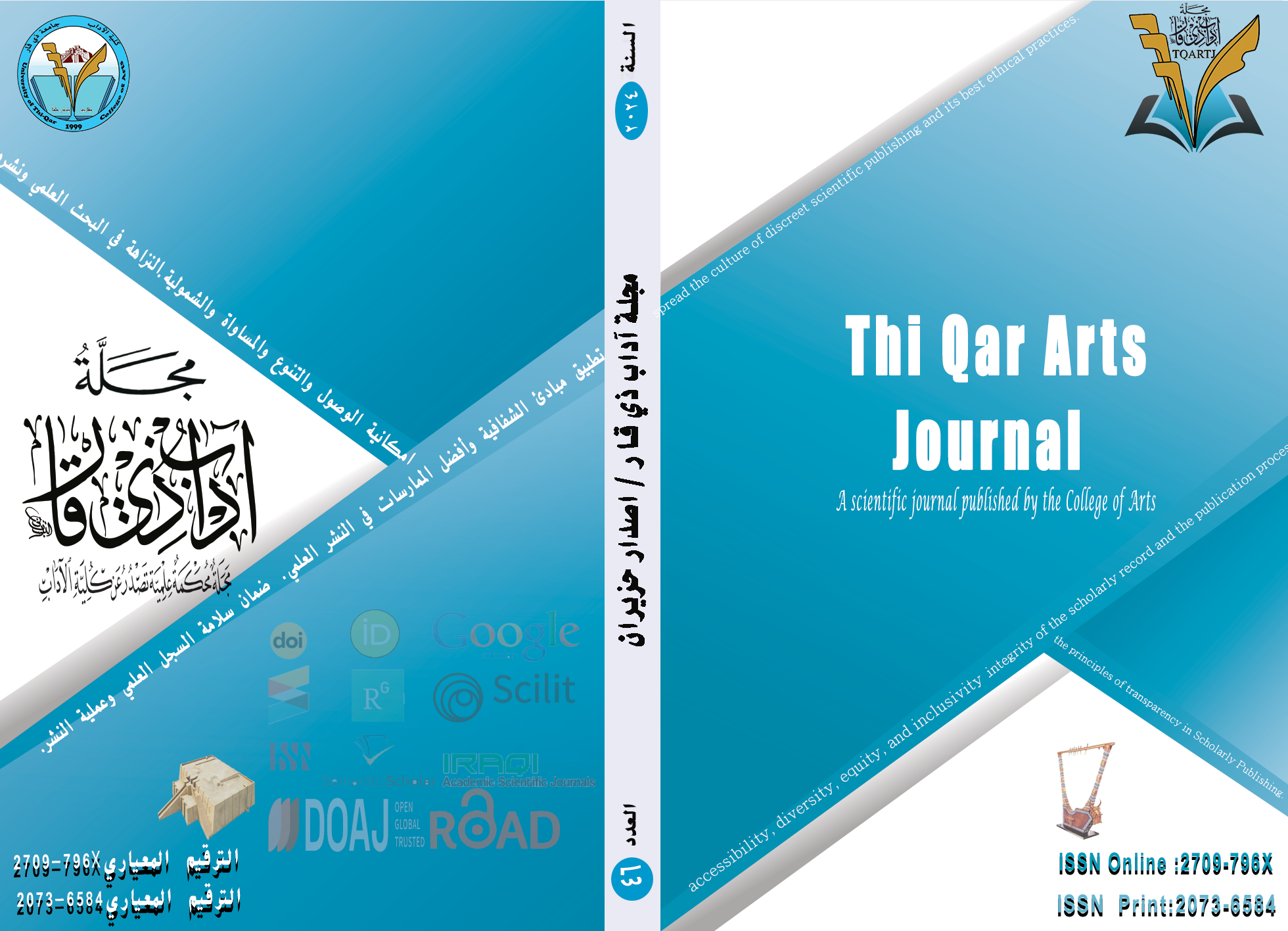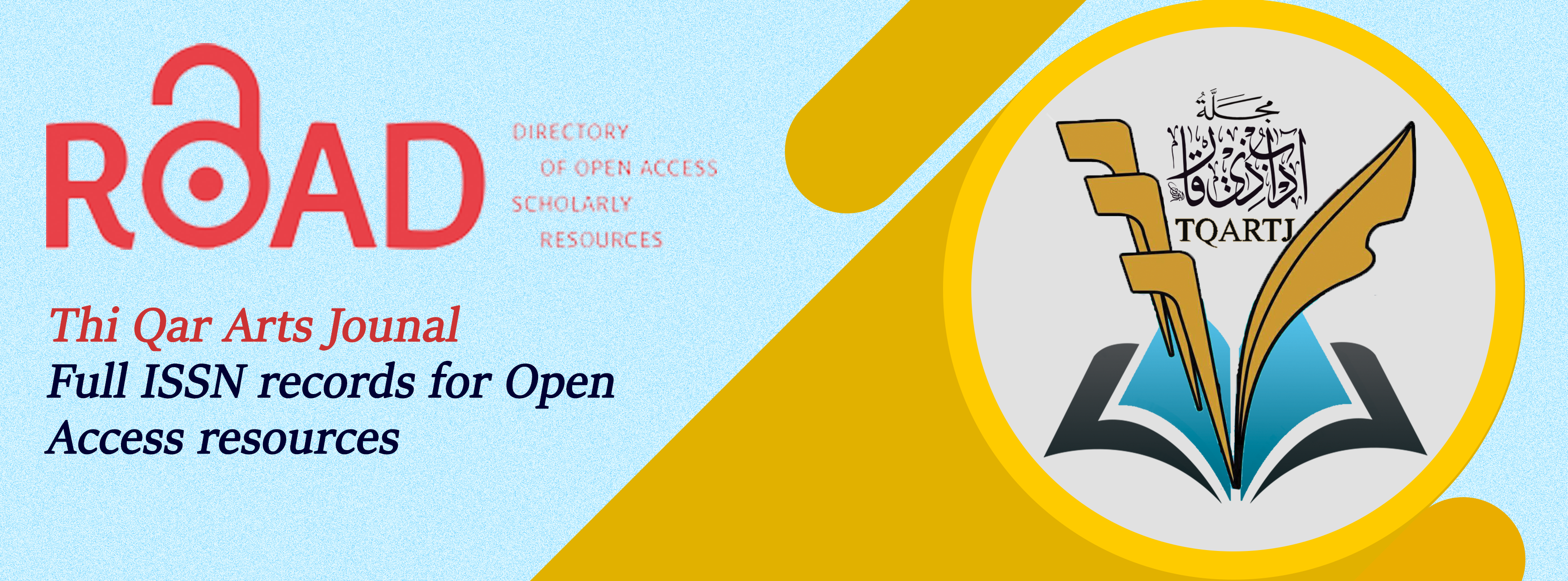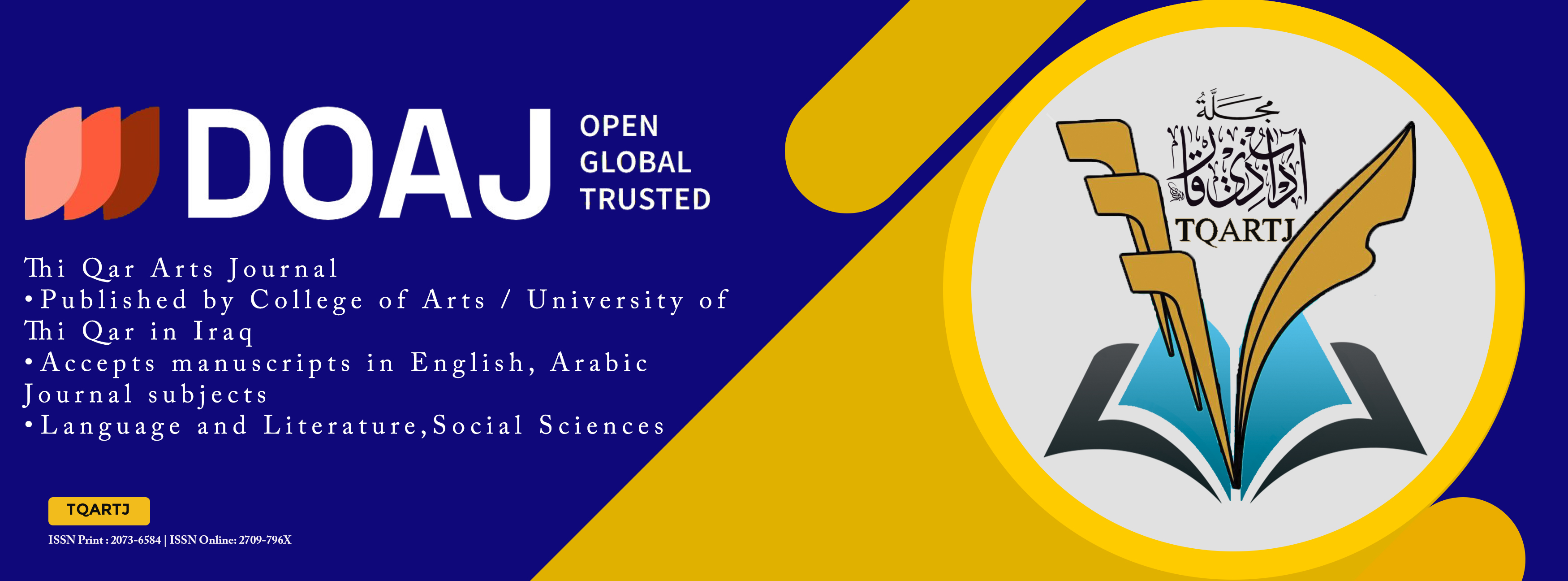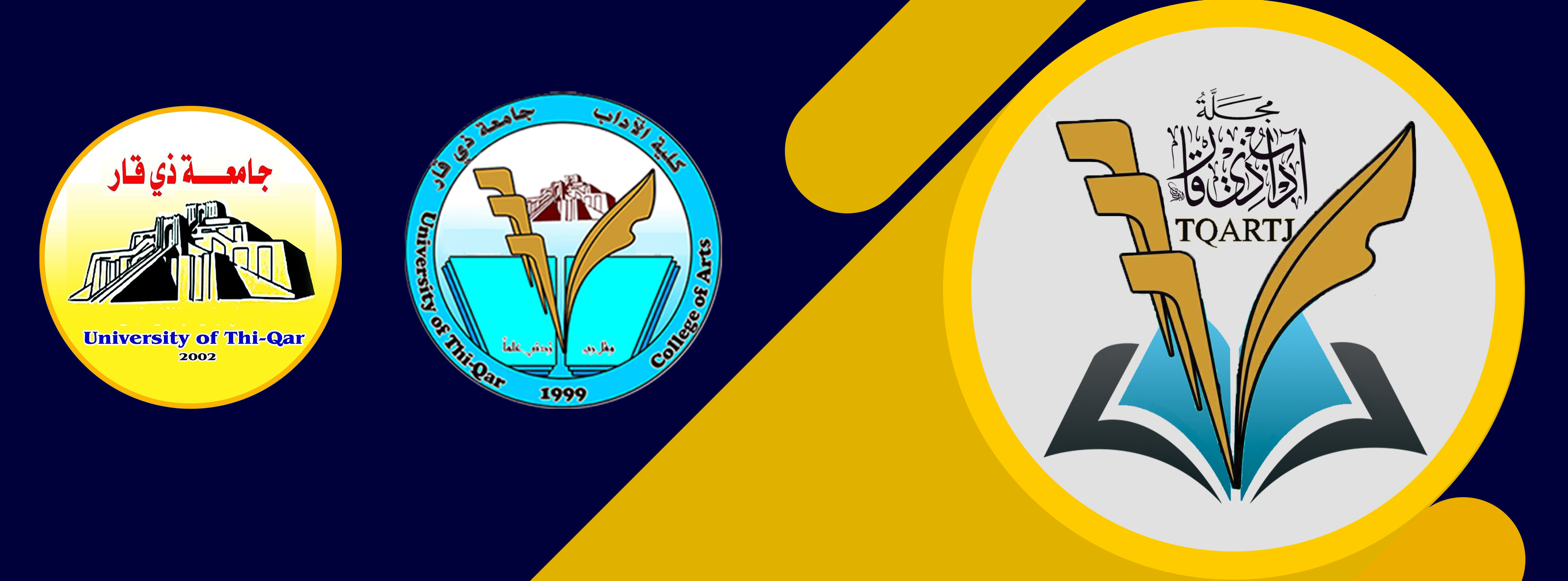Vowel Consumption for Assimilation: Between the Criteria of Optimality Theory and Ibn Jinni in His Book “Al-Muhtasib
DOI:
https://doi.org/10.32792/tqartj.v5i46.536Keywords:
:Consumption of Movement, Kinetic Followership, Optimality Theory, Ibn JinniAbstract
This research aims to examine the phenomenon of vowel consumption for assimilation, whether it is a case vowel or a building vowel, in the anomalous Quranic readings in Ibn Jinni’s book “Al-Muhtasib” according to two criteria. The first follows the path of the old linguistic study, represented by the view of Abu Al-Fath Ibn Jinni and what he sees as a reason for dropping the grammatical or structural entitlement. The second follows the path of the Optimality Theory (OT) as a modern theory that encompasses the field of language in general, including syntax, morphology, and phonology. The research then explains each approach’s method in directing these usages, as they deviate from the well-known established rules or are considered residual linguistic outputs from native speakers. The research aims to identify the points of agreement and disagreement in the method of direction or acceptance of these inputs. Ibn Jinni considers assimilation a directive reason for accepting these inputs, while the Optimality Theory (OT) addresses these usages from a broader and more comprehensive perspective. Ultimately, both criteria agree on accepting these performances, although they differ in their approach.
Downloads
References
The Holy Quran
“The Impact of Quranic Readings on Lexicography: Taj Al-Arus as a Model” by Dr. Abdul Razzaq bin Hamouda Al-Qadousi, Faculty of Arts, Helwan University, 2010.
“Linguistic Sounds” by Dr. Ibrahim Anis, Anglo-Egyptian Library, 5th edition, 1975.
“I’rab Al-Quran” by Abu Ja’far Al-Nahhas Ahmad bin Muhammad bin Ismail bin Younis Al-Muradi Al-Nahwi (338 AH), annotated by Abdul Munim Khalil Ibrahim, Muhammad Ali Baydoun Publications, Dar Al-Kutub Al-Ilmiyya, Beirut, 1st edition, 1421 AH.
“Al-Tibyan fi Tafsir Al-Quran” by Sheikh Al-Ta’ifa Abu Ja’far Muhammad bin Al-Hasan Al-Tusi (460 AH), edited and corrected by Ahmad Habib Qasir Al-Amili, 1st edition, 1409 AH.
“Al-Hujja li Al-Qurra’ Al-Sab’a” by Al-Hasan bin Ahmad bin Abdul Ghafar Al-Farsi, Abu Ali (d. 377 AH), edited by Badr Al-Din Qahwaji and Bashir Juwijabi, Dar Al-Ma’mun for Heritage, Damascus/Beirut, 1993.
“Al-Khasa’is” by Abu Al-Fath Uthman bin Jinni Al-Mawsili (d. 392 AH), Egyptian General Book Authority, 2000.
“The Reason for Establishing Arabic Grammar” by Abdul Rahman bin Abi Bakr, Jalal Al-Din Al-Suyuti (d. 911 AH), edited by Marwan Al-Atiya, Dar Al-Hijra, Beirut/Damascus, 1st edition, 1409 AH, 1988.
“The Phenomenon of Ittiba’ in the Arabic Language” by Al-Idrisi Fawzia Muhammad Hassan and Ahmad Alam Al-Din Ramadan Al-Jundi, PhD thesis, Umm Al-Qura University, Mecca, 1987.
“The Phenomenon of Ittiba’ in the Arabic Language” by Noura Saleh Al-Zahrani, Journal of the Faculty of Islamic and Arabic Studies for Girls in Damanhour, Issue 5, Part 2, 2020.
“Al-Kitab” by Amr bin Uthman bin Qanbar Al-Harthi, known as Sibawayh (d. 180 AH), edited by Abdul Salam Muhammad Harun, Al-Khanji Library, Cairo, 1998.
“Lisan Al-Arab” by Muhammad bin Makram bin Ali, Abu Al-Fadl, Jamal Al-Din Ibn Manzur Al-Ansari Al-Ruwaifi Al-Ifriqi (d. 711 AH), Dar Sader, Beirut, 3rd edition, 1414 AH.
“The Arabic Language Between Grammar and the Residual in Light of the Theory of Optimality: A Descriptive Analytical Study” by Dr. Yahya Ababneh, Irbid, Dar Al-Kitab Al-Thaqafi, 2016.
“Al-Muhtasib fi Tabyin Wujuh Shawadh Al-Qira’at wa Al-Iydah Anha” by Abu Al-Fath Uthman bin Jinni Al-Mawsili (d. 392 AH), studied and edited by Muhammad Abdul Qadir Ata, Muhammad Ali Baydoun Publications, Dar Al-Kutub Al-Ilmiyya, Beirut, Lebanon, 1998.
“Ma’ani Al-Quran” by Abu Zakariya Yahya bin Ziyad bin Abdullah bin Manzur Al-Dailami Al-Farra (d. 207 AH), edited by Ahmad Yusuf Al-Najati, Muhammad Ali Al-Najjar, and Abdul Fattah Ismail Al-Shalabi, Egyptian House for Authorship and Translation, Egypt, 1st edition.
“Contemporary Arabic Language Dictionary” by Dr. Ahmad Mukhtar Abdul Hamid Omar (d. 1424 AH) with the assistance of a team, Alam Al-Kutub, 2008.
“Mu’jam Maqayis Al-Lugha” by Ahmad bin Faris bin Zakariya Al-Qazwini Al-Razi, Abu Al-Husayn (d. 395 AH), edited by Abdul Salam Muhammad Harun, Dar Al-Fikr, 1979.
“From the Secrets of Language” by Ibrahim Anis, Anglo-Egyptian Library, Cairo, 2003, 8th edition.
“The Differential Theory in Linguistic Analysis” by Rene Kager, translated by Dr. Faisal bin Muhammad Al-Muhanna, Assistant Professor of Linguistics, Department of European Languages and Translation, College of Languages and Translation, King Saud University, 2005.
J.McCarthy, John. What is Optimality Theory ?, University of Massachusetts, Linguistics Department Faculty Publication Series, 2007
Downloads
Published
How to Cite
License
Copyright (c) 2024 Wisam Jasim Majeed- Dr. Marzie Abad - Dr. Muhannad Dhiab Faisal

This work is licensed under a Creative Commons Attribution 4.0 International License.
The journal applies the license of CC BY (a Creative Commons Attribution International license). This license allows authors to keep ownership of the copyright of their papers. But this license permits any user to download, print out, extract, reuse, archive, and distribute the article, so long as appropriate credit is given to the authors and the source of the work. The license ensures that the article will be available as widely as possible and that the article can be included in any scientific archive.














